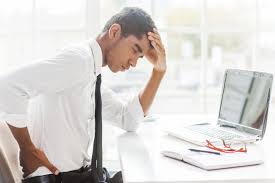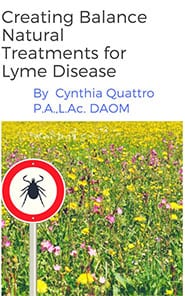 Arthritis is not just a single disease; it is a complex disorder involving multiple organ systems. Two of the most common forms of arthritis are categorized as osteoarthritis and rheumatoid arthritis. While these two forms of arthritis have very different causes, risk factors and effects on the body, they share a common symptom — persistent joint pain. Fortunately, arthritis can often be managed with acupuncture, nutrition, and targeted exercise. Acupuncture in particular has become a mainstream modality for the treatment of pain and inflammation. READ MORE
Arthritis is not just a single disease; it is a complex disorder involving multiple organ systems. Two of the most common forms of arthritis are categorized as osteoarthritis and rheumatoid arthritis. While these two forms of arthritis have very different causes, risk factors and effects on the body, they share a common symptom — persistent joint pain. Fortunately, arthritis can often be managed with acupuncture, nutrition, and targeted exercise. Acupuncture in particular has become a mainstream modality for the treatment of pain and inflammation. READ MORE
Arthritis is one of the most common diseases in the United States and is the leading cause of disability. According to the Centers for Disease Control and Prevention, an estimated 70 million Americans are affected, which translates to suffering for about one out of three people living in the United States.
Arthritis is not just a single disease; it is a complex disorder involving multiple organ systems. Two of the most common forms of arthritis are categorized as osteoarthritis and rheumatoid arthritis. While these two forms of arthritis have very different causes, risk factors and effects on the body, they share a common symptom — persistent joint pain.
Integrative medicine, acupuncture, and arthritis
Fortunately, arthritis can often be managed with acupuncture, nutrition, and targeted exercise. Acupuncture in particular has become a mainstream modality for the treatment of pain and inflammation.
In fact, according to a 2007 survey performed by the U.S. government’s National Center for Complementary and Alternative Medicine, more than 3 million Americans had undergone acupuncture in that year, up from a little over 2 million in 2001.
In a recent “Wall Street Journal” article (March 22, 2010), acupuncture was described as a scientific way to treat many conditions, including arthritis. In the article, there were examples of U.S. Navy, Air Force, and Army doctors using acupuncture to treat musculoskeletal problems, pain, and stress in both stateside hospitals and the combat zones of Iraq and Afghanistan.
How acupuncture works
While “The Wall Street Journal” article referred to studies in the early 1980s, which found that acupuncture works in part by stimulating the release of endorphins, the body’s natural feel-good chemicals, a growing body of research suggests that acupuncture may have several mechanisms of action.
One mechanism involves the stimulation of blood flow with follow-up tissue repair at the needle sites. Other mechanisms depend on the transmission of nerve signals to different parts of the brain. Acupuncture can thus help the brain regulate the perception of pain, reboot the autonomic nervous system (important in how the body manages stress), and direct the reduction of inflammation.
Multiple Styles of Acupuncture
There is more than one style of acupuncture. The Japanese method uses thinner shorter needles than the better-known Chinese version of acupuncture. Japanese acupuncture so relies on finesse that part of its treatment modality entails the holding of a needle against the relevant acupuncture points with no insertion involved. While Japanese-style acupuncture does deploy the shallow insertion of needles the majority of the time, the treatments are essentially painless and often result in a fringe benefit of deep relaxation.
The Eastern view of arthritis
In Oriental medicine, arthritis is called “Bi Syndrome.” Bi Syndrome manifests as pain, soreness, or numbness of muscles, tendons and joints. Arthritis is treated according to which type of Bi Syndrome it falls into. These include:
- Moving (Wind) Bi Syndrome: Pain in the joints is widespread and moves from one area of the body to another.
- Stationary (Damp) Bi Syndrome: The pain is localized and does not move. The body and limbs feel heavy and may be accompanied by numbness and swelling.
- Painful (Cold) Bi Syndrome: Severe pain in one joint or one area of the body. This kind of pain becomes worse with cold and diminishes with warmth.
- Heat Bi Syndrome: The skin is hot; the area of pain is red and swollen and painful to touch.
Treatments take all symptoms into account and are aimed at balancing the entire body. Although acupuncture may not relieve all patient pain in one treatment, acupuncture does have cumulative effects. Not only is pain is reduced through successive treatments, the potential for reoccurrence of inflammation and injury is also diminished.


